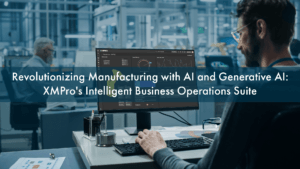 Most industries are now knowledge-based industries, from agriculture to manufacturing, construction to mining. These industries have , to a large extend, moved away from physical labor to mechanization and automation. Manual labor is to a large degree now reserved for areas where skills are highly specialized or not yet cost effective to automate. Many skilled artisans and factory floor workers now operate computerized equipment during a shift of “manual” labor. The machines do the predictable work where every potential option is defined and coded in their “workflow”. The unpredictable is still left to humans.
Most industries are now knowledge-based industries, from agriculture to manufacturing, construction to mining. These industries have , to a large extend, moved away from physical labor to mechanization and automation. Manual labor is to a large degree now reserved for areas where skills are highly specialized or not yet cost effective to automate. Many skilled artisans and factory floor workers now operate computerized equipment during a shift of “manual” labor. The machines do the predictable work where every potential option is defined and coded in their “workflow”. The unpredictable is still left to humans.
Service based industries are no different. It just relies on less manufacturing and shop-floor machines and more on people. Much of the routine, known and structured work, is done by a few computerized systems that use ERP, CRM, Workflow or dedicated Line of Business (LOB) applications to gain improved efficiencies.
People are critical in these service based industries like Banking and Financial Services, Healthcare, Pharmaceuticals, Retail, Professional Services, Education, Social Services and many, many more. People handle the unstructured work to develop new products, service customers and work within the governance frameworks for those specific industries or even patterns of work.
Risk is known for structured work. It is part of the business analysis done before a new structured system or machine is designed. But unstructured work remains a challenge. People have a “mind of their own” and don’t always follow the prescribed path, policy or work instruction. Most often they don’t have a choice. Their work is dictated by external forces (customers, suppliers, legislation etc.) and they are in reactionary mode.
They evaluate the (contextual) information at hand and make decisions based on their knowledge, experience and intuition. This is unstructured work and it is “risky”. You can’t always control it with business rules, set workflows and rigid business applications. Their decisions will determine the outcome of the event.
By automating structured work, we achieve a standardized outcome,which is what we want. This is important to all the transactions or activities where we control the factors that influence them. Automation and business rules can manage these. This is often achieved with “Systems of Transaction”. It is high volume and repetitive. Failures are generally systemic (the system fails). It is an area that most enterprises have under control. They can produce standardized outcomes for much of their transactional areas. Just think of ATM withdrawal processes for a bank or MRP runs for a vehicle manufacturer.
But standardization doesn’t make you different. It makes you the same as everyone else. Differentiation and Competitive Advantage are key drivers for most (if not all) organizations today. They need “Systems of Differentiation” and “Systems of Innovation” to remain competitive. This means unstructured work that is unpredictable with increased risk. It means relying on people to make decisions that will impact the outcome of a specific business process. By managing the unstructured, unpredictable work, we achieve unique outcomes, which is what we want.
Many organizations don’t distinguish between the two different styles of work and try to use the same machines, tools and techniques to address both. This causes high impact failures and increased risk in terms of:
- Compliance
- Cost
- Reputation
It more than often results in customer service failure, highly stressed or demotivated employees and fines and penalties for breaching rules and regulations. See www.sec.gov for some of the fines and penalties imposed on businesses as a result of a “process failure”.
These are generally not process failures, but failing to support the unstructured knowledge work with the right tools. BPM tools that are based on workflow technology are not architected to solve the unpredictability of work where the flow path is not known in advance. They rely on the fact that all potential paths can be mapped in advance and that there are a finite set of business rules that control all process flows. This approached is flawed by design and results in many re-designs as organizations often attempt to cater for the dynamic nature of real work.
Managing unstructured work with unique outcomes for each transaction requires an event-based, rather than workflow-based, architecture. It requires multiple routing options for complex work routines and decision support for knowledge workers to make the right decisions. It needs built-in operational intelligence and a business rules framework to support governance and compliance. It needs to easily integrate to structured business systems without compromising the ability to manage unpredictable work. But it needs to retain the person as the director in charge to make decisions based on knowledge, experience and intuition.
The human brain can process an infinite number of possible courses of action. Workflow can only process what has been defined, mapped and coded.
That’s why workflow doesn’t work for 80% of the work that you do everyday, in your specific job, in your specific industry.
XMPro is an event-based work management toolset that excels at managing complex, integrated, unpredictable work where the flow is not known in advance and every activity requires a different outcome. XMPro does it all in a governance framework that ensures your unstructured, unpredictable processes don’t become uncontrolled messaging (like your email system), but that it becomes a decisions support system for people that are hired for their knowledge and skills to provide the differentiation and innovation that give your business an “unfair” competitive advantage. Work happens, manage it.

















